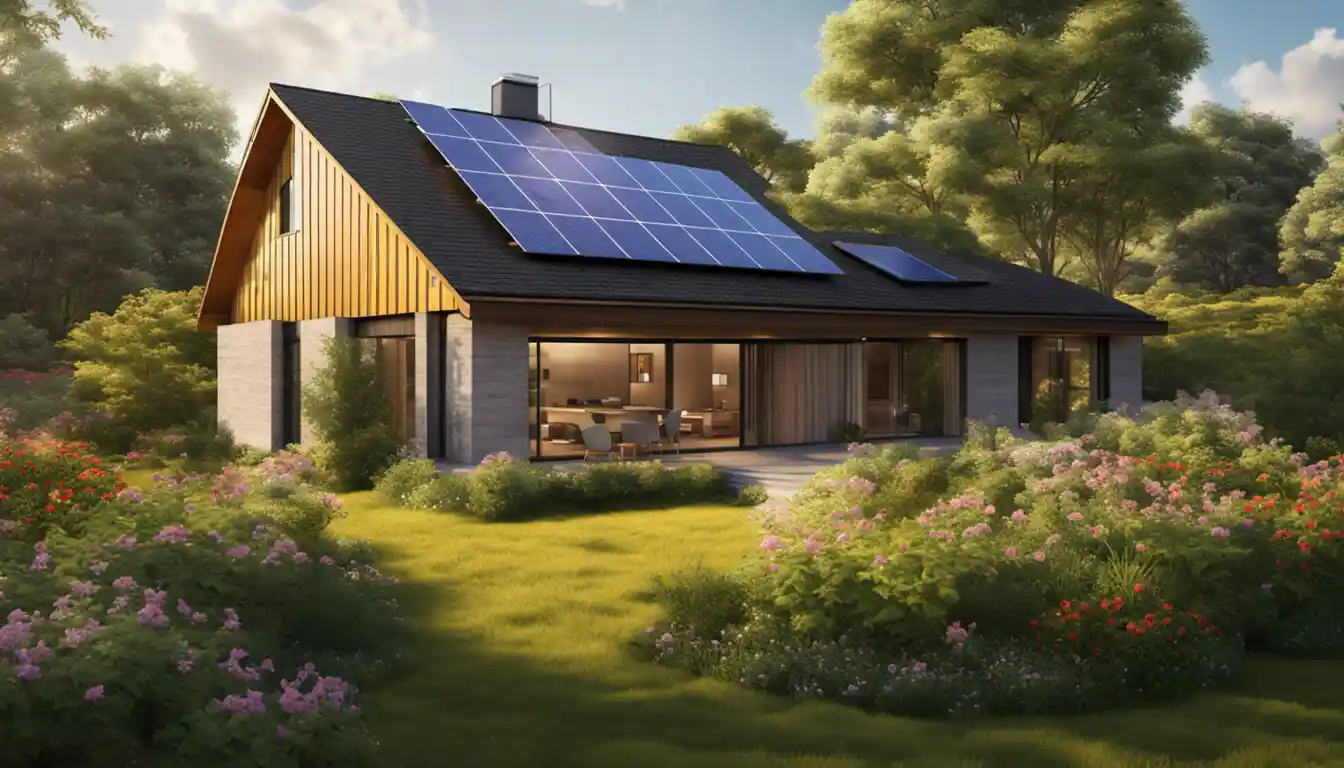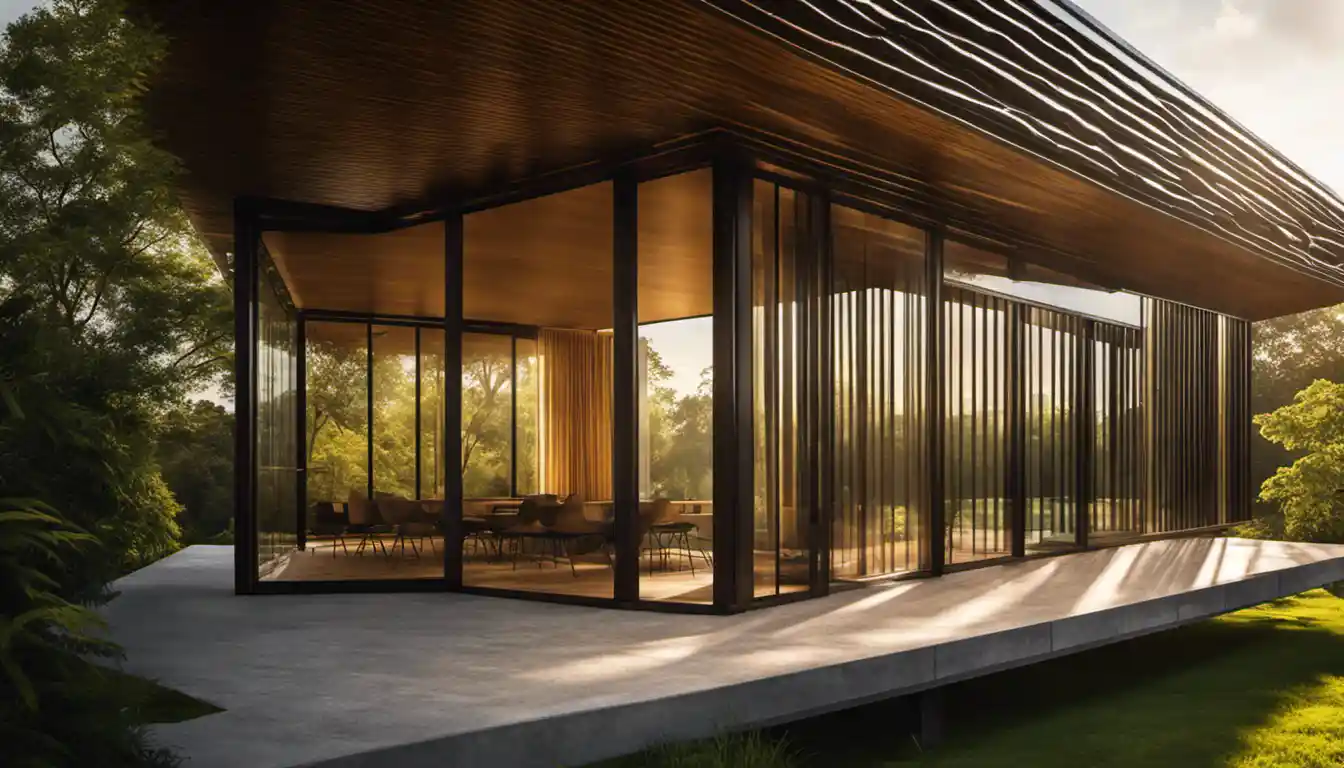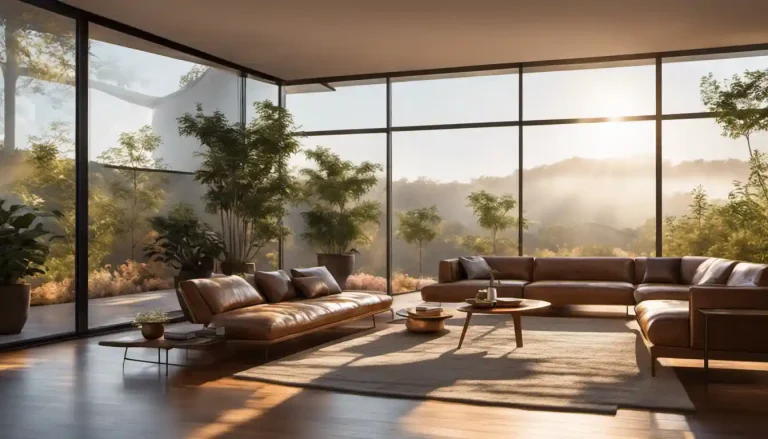Understanding Passive Solar Heating
Passive solar heating offers numerous pros such as reducing energy bills as sunlight is free, environmentally friendly since it reduces reliance on fossil fuels, and requires minimal maintenance. However, cons include the lack of consistency and reliability due to changing weather, and the initial cost for design and building materials can be substantial. Moreover, not all buildings or locations are suitable for passive solar heating, limiting its application.
Understanding Passive Solar Heating
As a seasoned solar power guru with over 20 years experience in the trade, let me break down the intriguing world of passive solar heating for you. It’s a simple, cost-effective method of transforming our radiant sun’s energy into a warm, cozy indoor oasis. Imagine lounging comfortably in a well-lit room, knowing your heating bills are dwindling down—not by magic, but by the silent work of passive solar heating.
What is Passive Solar Heating?
Picture this—your sunlit kitchen, basking in mid-morning light. It’s not just a pleasant scene; your home is smartly employing passive solar heating. This process utilizes strategically designed openings (think windows, walls, and flooring) to gather, store, and distribute the sun’s heat in the winter. Likewise, it cools your home in the summer, making you an active participant in the green revolution.
Five Key Concepts of Passive Solar Design
A successful passive solar design employs five key concepts you should recognize.
Apertures
Enter, the sun’s rays! In a perfectly designed space, sunlight comes in through apertures—your doors, windows, and skylights. They channel the sunlight into your living areas with a surprising precision given their simplicity.
Absorbers
Ever warmed your hands on a sun-heated slab of concrete? That’s the idea behind absorbers. Dark surfaces within your house soak up sunlight, converting it into ambient heat that keeps your home toastier in the cooler months.
Thermal mass

Here’s where things get a bit scientific. Thermal mass is the concept behind materials that store heat during the day and gradually release it as temperatures drop. It’s the equivalent of slow-cooking your home’s warmth.
Distribution
For ultimate efficiency, passive solar design emphasizes spreading the captured heat throughout your house. Whether by natural conduction, radiation, or convection, a well-thought-out design will help distribute heat evenly to all corners of your residence.
Control
Finally, we can’t forget about control mechanisms. Overhangs, shading devices, and louvers help regulate the amount of sunlight entering your home, maintaining a perfect balance all year round.
The Four Methods of Passive Solar Heat Gain
Passive solar heat gain is not a one-trick pony. There are four leading methods to pull this off: Direct gain, sun-tempering, indirect gain, and isolated gain.
Direct gain is the sunlight entering your home as heat, sun-tempering lowers heating costs by letting in a moderate amount of sunlight with less glazing area, while indirect gain involves absorbing heat in one area (like a wall or roof) and circulating it throughout the building. Isolated gain is an interesting approach where sunlight is captured in an area separate from your living spaces – like a sunroom – and redirected as required.
The Advantages of Passive Solar Heating
So, we’ve garnered quite a bit about passive solar heating. But what are the practical benefits? Why should anyone pay attention to the pros and cons of passive solar heating? Let’s delve into some advantages that could make it worth your while.
You Don’t Need Direct Sunlight
Passive solar heating doesn’t necessarily need direct sunlight but mainly requires natural light. Consequently, even homes in less sunny areas can benefit from this energy-efficient heating method.
Passive Solar is Often Cheaper

Aside from the initial cost of implementing passive solar heating, you don’t need to shell out cash for operational expenses because the sun, bless its heart, doesn’t send a monthly bill!
Reduction in Noise Pollution
Here’s a bonus—passive solar heating elements, being non-mechanical, don’t produce noise. It’s a lovely treat for the peace-seekers amongst us—a silent solution for an energy-efficient, environmentally-friendly home.
Low Maintenance Costs
Without any moving parts or complex machinery, the maintenance price tag on passive solar heating is attractively low.
The Disadvantages of Passive Solar Heating
Despite its benefits, it’s crucial to explore the disadvantages of passive solar heating, too. Two notable drawbacks are limited design options and the challenge of managing seasonal fluctuation.
Limited Design Options
Passive solar homes must be designed strategically, with meticulous planning to ensure successful passive heating and cooling. This can curb aesthetic flexibility and pose challenges on irregular or shaded sites.
Navigating Seasonal Fluctuations
Capturing enough sun for heating in winter without overheating in summer takes a careful balance. This seasonal fluctuation calls for thoughtful design and engineering, hinging on local solar paths and the unique characteristics of your home’s site.
Passive Solar Cooling

Interestingly, this sun-fueled system isn’t all heating. Using passive solar principes for cooling adds another temptation into the mix. It significantly reduces the need for energy-guzzling air conditioning units.
Shading
Strategically added shades can help keep excessive sun heat out. Tree plantings, window coverings, and other shading strategies become your rustling, billowing allies against summer heat.
Ventilation
Harnessing cool breezes or chill nighttime air can effectively vent out heat buildup, providing a natural cooling effect.
Convection
Using convection principles, warm air can be routed upwards and out, letting cooler air settle and create a comfortable living environment.
Integration of Passive Solar with other Renewable Technologies
Penned as a smart, sustainable strategy, passive solar design can complement other renewable technologies, notably photovoltaic solar panels. While passive solar focuses on heating or cooling the house, photovoltaic panels convert sunlight into usable electricity, forming a comprehensive clean energy solution. For more in-depth comparisons, be sure to check out our article on active vs passive solar heating.
Conclusion
Engaging with the pros and cons of passive solar heating can shed some much-needed light on this powerful yet underutilized energy-saving solution. It’s not a golden key to all our energy woes, but passive solar has definite potential to be part of an inclusive green energy revolution. The idea of combining comfort, sustainability, and cost savings seems appealing for homeowners and presents yet another reason to respect and utilize the boundless energy our sun offers us every day.
Key Takeaways: Is Passive Solar Heating Right for You?
In this journey through the pros and cons of passive solar heating, it’s clear that this technology is more than a passing fad or part-time solution. A sustainable world hinges on innovations just like this; every stride counts in the race for a clean energy future. But the path to adopting passive solar heating is paved with thoughtful deliberation. Navigate your unique circumstances, weigh the advantages against the disadvantages of passive solar heating, and see if it could be the key to unlocking your sustainable abode.



